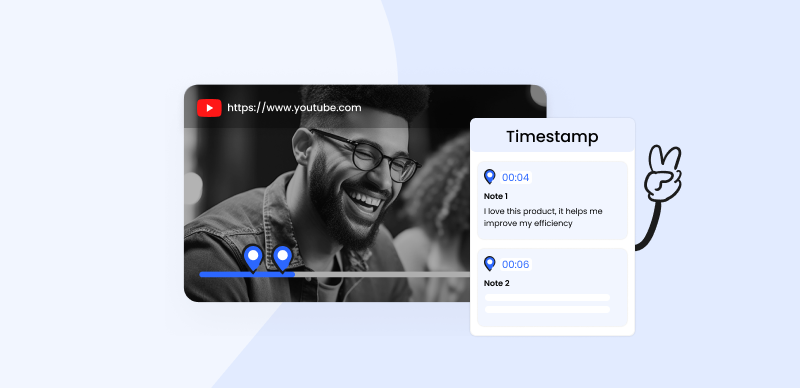Have you ever watched a video that allowed you to influence its storyline? If so, you’ve experienced the exciting world of interactive video. This cutting-edge video format captures viewers’ attention with its immersive style. Various online tools can help you create interactive videos – from AI video editors to screen casting software. These tools can help you to make an interactive video by screen recording or uploading a video to edit.

What Is an Interactive Video
However, is an interactive video worth your try? This article will give you an in-depth overview of interactive videos. Plus, there will be a guide on how to create these types of videos. Let’s get into it.
Table of Contents: hide
Differences Between Video and Interactive Video
What Are the Types of Interactive Videos?
What Is an Interactive Video?
An interactive video is a digital video that allows viewers to actively participate in and influence the storyline through a series of choices. Unlike a traditional linear video, which plays from start to finish, interactive videos incorporate technology that adapts the viewing experience based on user input.
The user selects, and interactive video software loads the corresponding video segment to match their choice. This process creates a nonlinear, choose-your-own-adventure style viewing experience that is unique for each viewer.
Differences Between Video and Interactive Video
Interactive video offers a fundamentally different viewing experience from traditional linear video. Several key distinctions set these two formats apart, as given below:
🔎 Linear Narrative vs. Branching Narrative: The traditional video has a linear narrative that plays from start to finish in a fixed sequence. On the other hand, an interactive video utilizes a branching narrative with different decision points. You can change the story as per your experience from these points.
🔎 Pre-Determined Experience vs. Customized Experience: All viewers have the same passive, predetermined viewing experience with regular video. Interactive video adapts to create a unique viewing experience tailored to the viewer based on their choices.
🔎 Single Storyline vs. Multiple Storylines: The regular video follows one storyline. In contrast, Interactive videos feature multiple storyline variations and endings based on the viewer’s decisions.
🔎 Passive Viewing vs. Active Participation: Viewers have no control over regular video as passive watchers. However, an interactive video urges viewers to actively participate in shaping the story through their choices.
🔎 Fixed Media vs. Responsive Media: Regular video is a fixed, linear media format. In the other corner, the interactive video incorporates responsive technology that dynamically adapts the content to each viewer in real-time.
What Are the Types of Interactive Videos?
Interactive video is an umbrella term that covers several different formats. Several interactive video types provide unique ways for audiences to engage with and influence the content. Some of them are given below:
🔎 Branching Video: The traditional video has a linear narrative that plays from start to finish in a fixed sequence. On the other hand, an interactive video utilizes a branching narrative with different decision points. You can change the story as per your experience from these points.
🔎 360° Video: These are the films where the viewer’s perspective can be manipulated by clicking and dragging to look around a 360-degree environment. It requires recording with a 360-degree camera. Additionally, a 360 video can transport viewers into the center of the video and make them feel like part of the scene.
🔎 Hotspot Video: Hotspot videos immerse clickable hotspots. These contain triggers that pop up text, audio, images, or videos when selected. Viewers interact by clicking hotspots during playback.
🔎 Quiz Video: Quiz video contains multiple choice, true/false, or open-ended quiz questions periodically throughout an educational or training video. Viewers click or type an answer to get visual feedback and reinforce their learning. It can include scoring mechanics and final results to make it more game-like.
🔎 Shoppable Product Videos: Overlay clickable tags on products featured in a video that links directly to e-commerce product pages. It allows viewers to purchase items as they watch easily. These videos work well for product demos, unboxing, makeup tutorials, and fashion videos. You can keep viewers engaged while encouraging conversion.
🔎 Gamified Challenge Videos: These videos incorporate game elements like point systems, timers, or rewards. With the help of gamified challenge videos, you can make the viewing experience more participatory. For example, prompting viewers to locate hidden objects or Easter eggs concealed in the video.
🔎 Annotated Tutorial Videos: Overlay text options like drawings, highlights, buttons, or other graphics onto a traditional linear video can create annotated tutorial videos. They augment the information or enable interactive on-video actions. For example, linking out to downloadable assets from a software tutorial
How Do Interactive Videos Work?
Behind the scenes, interactive videos are powered by sophisticated technology that brings responsiveness to the viewing experience. When you choose the video, special software tracks your selection and pulls the matching footage from a giant library of video clips.
Algorithms work in real time to stitch these clips together to create your personalized story path. The more choices you make, the more twists the story gets and takes you deep down into the video’s plot.
Moreover, an interactive video can react to different taps, clicks, motions, and voice commands, constantly iterating to respond to your preferences. With every decision, you steer the storytelling journey.
In short, interactive video formats may differ, but they all create a two-way conversation between the viewer and the video. You guide the experience, and the technology adapts the content to your desires. This results in a responsive viewing adventure.
Why Use Interactive Video?
Interactive video offers many benefits, making it an appealing choice for creators and marketers seeking to engage modern audiences. Some of the advantages are listed below:
⭐ Increased engagement – the interactive nature keeps viewers more hooked.
⭐ Provides customized content tailored to each viewer based on their interests and choices.
⭐ Drives higher conversion rates compared to linear video due to immersive effects.
⭐ Users can give valuable data through their interactions to refine content further.
⭐ Boosts retention and memorability of video content by making viewers active participants.
⭐ Allows creators and marketers to connect with modern audiences in new and exciting ways.
How to Create an Interactive Video?
Gemoo is an innovative platform that can help you to create an interactive video. It offers a powerful tool for your need to craft captivating content that pours profound connections in your viewers. Besides, it easily boosts comprehension through real-time annotations like text, shapes, and arrows that visually guide the audience through your video seamlessly. Furthermore, you can ask viewers questions and collect their emails in the specific video parts, driving higher engagement.
Talking about video quality, it can deliver up to 4K videos, so that you can showcase every detail with unparalleled clarity. Sharing is instant, without lengthy uploads or processing waits, while password protections and limited access ensure your content stays secure. You remain in full control.
Key Features
Some notable features of this software include:
- Convenient video embedding and uploads from diverse sources
- Intuitive screen recording annotation and editing tools for optimal visuals
- Cloud storage and organization for easy access anywhere in the world
- Content organization by priority, topic, or chronology to maximize productivity
Follow these steps to create an interactive video with simple clicks.
Step 1. Sign up to Gemoo with simple clicks. Click on Record a video or Upload a video. If you choose the recording option, you have to grant camera and mic access if prompted. Here, we create an interactive video by recording a new video.
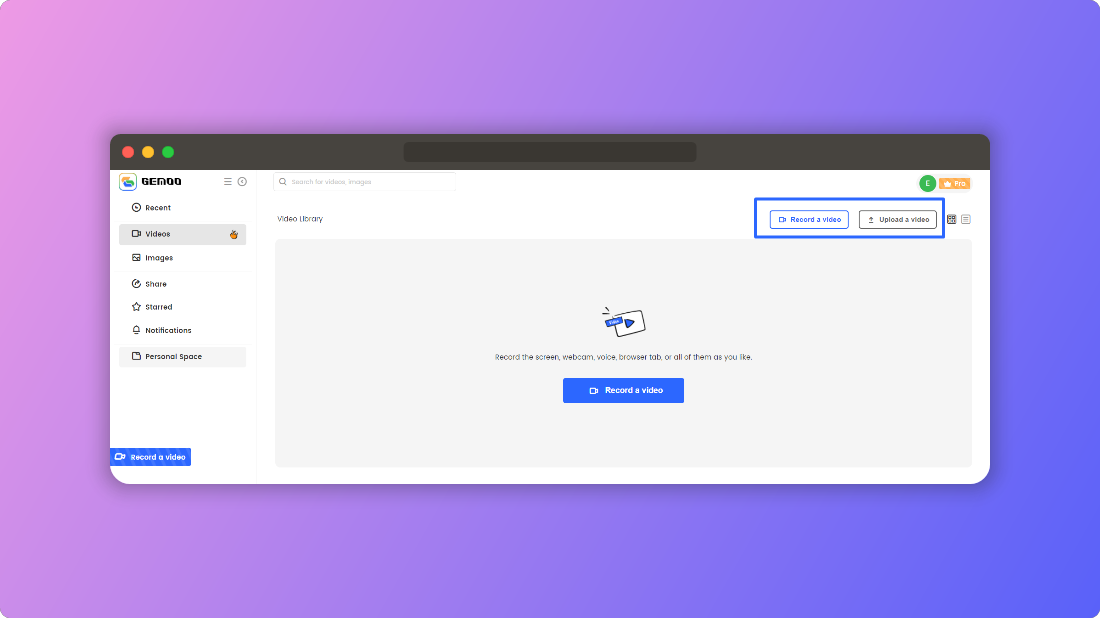
Create a Video via Two Modes
Step 2. On the next screen, choose from different settings – screen only, screen + camera, or audio only. You can also customize the resolution from this screen. Once you have finalized all the settings, click the Start Recording button.
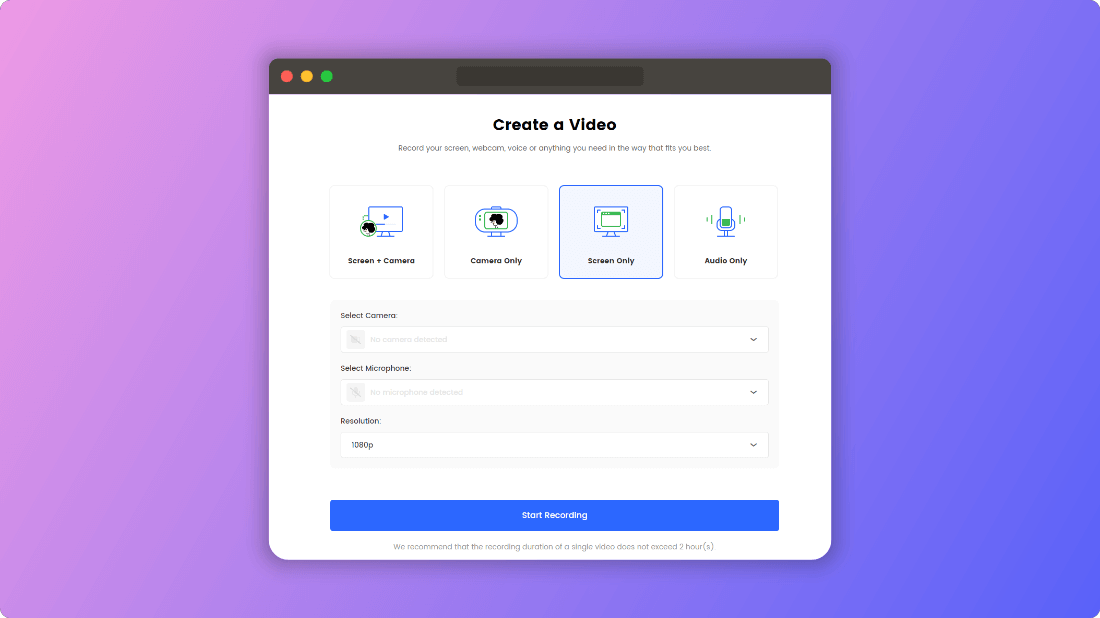
Record Screen Only
Step 3. Next, a dialog box will appear. Choose from different screens – Chrome tab, window, and full-screen. Begin recording by clicking the “Share” button; minimize when needed.
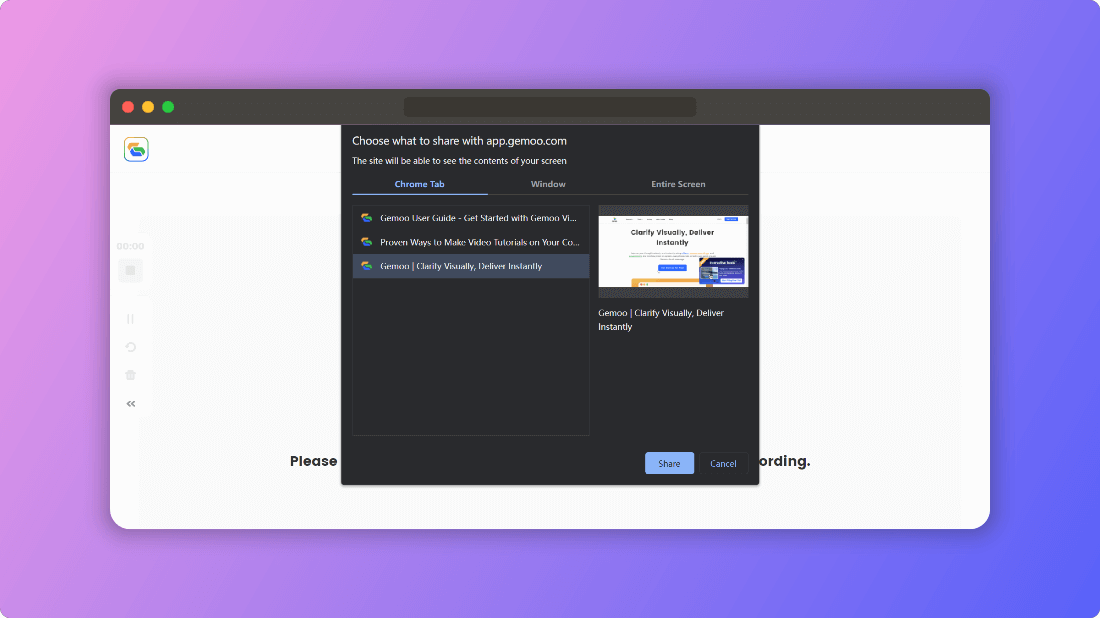
Choose a Screen You Want to Record
Step 4. When finished, click the red “Stop” button to end the recording. The video will be saved automatically. Then you can edit, add text, and make it interactive in Video Library.
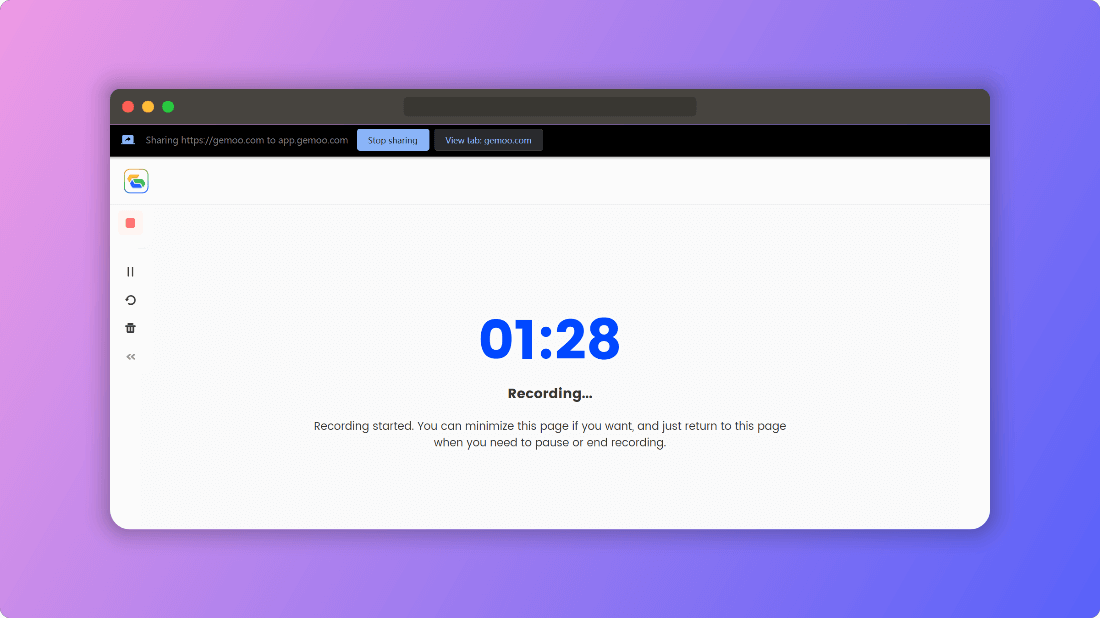
Recording Page
Step 5. To make the video interactive, Gemoo offers various tools. You can access them in the bottom-left menu.
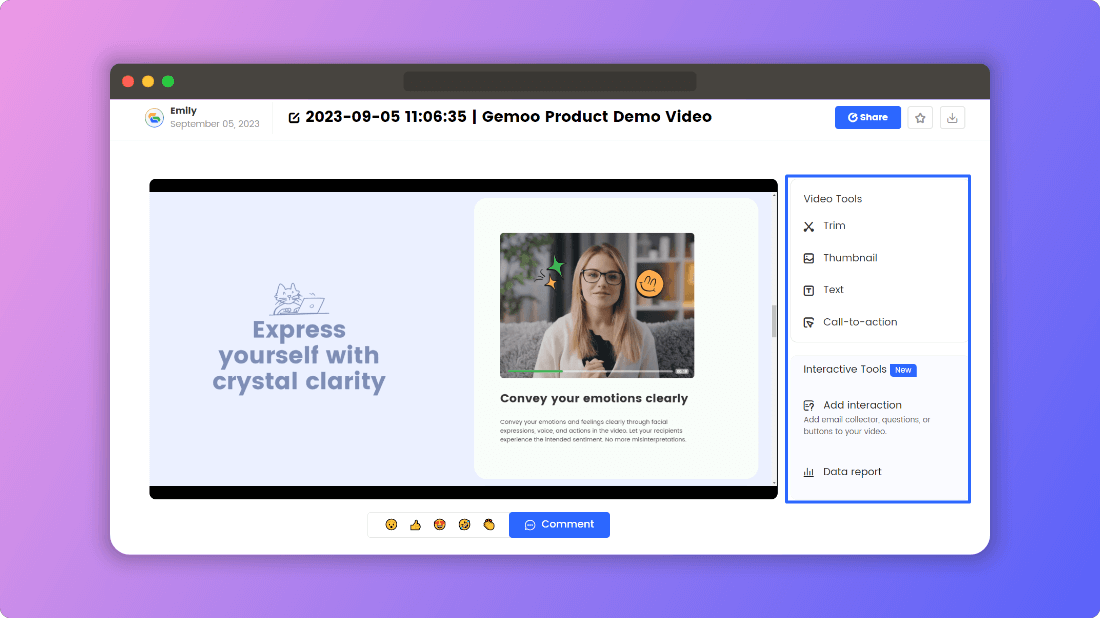
Create an Interactive Video
In this section, you can trim, add thumbnails, text, and call to actions to your videos. Moreover, you can use its interactive tools to collect email, ask questions, and buttons to make viewers more engaged your the video.
Final Thought
And that’s a wrap on the world of interactive video. This dynamic format incorporates technology that allows viewers to influence storylines actively and tailors the experience based on their choices.
Moreover, Interactive video transforms passive watchers into engaged participants and provides customized, nonlinear narratives that connect with modern audiences. As this technology continues evolving, it promises to offer even more captivating and responsive viewing possibilities.

